For many, moving from Europe to Sydney seems like the perfect choice, with its excellent weather, stunning beaches, and laid-back lifestyle. Beyond this, the city also boasts Australia’s strongest job market and is celebrated as one of the most multicultural cities in the world. With a population of over 5 million people representing more than 200 nationalities. More than 40% of its residents were born overseas, contributing to its diverse and vibrant culture.
All of this makes Sydney a great destination for travelers moving to Australia, especially those on a Working Holiday Visa looking to secure work quickly. With a large international community and plenty of fellow travelers, it’s easy to settle in, mingle and make connections in the city.
That being said, moving from Europe to Sydney hasn’t been without its surprises.. Despite its many perks, there were quite a few things that caught us off guard. Especially when comparing life here to my previous experiences in London and Berlin. From the quirks of public transport to the unexpected costs of daily life. Adjusting to Sydney has come with its fair share of challenges.
But don’t worry—it’s not all bad! Some of these surprises were actually pretty great, while others… well, let’s just say they took some getting used to. In this article, we’ll dive into three things that truly surprised us about living in Sydney.
PS – If you’re thinking about moving from Europe to Sydney on a Working Holiday Visa, click here for an honest review about the challenges of the 417 Visa!
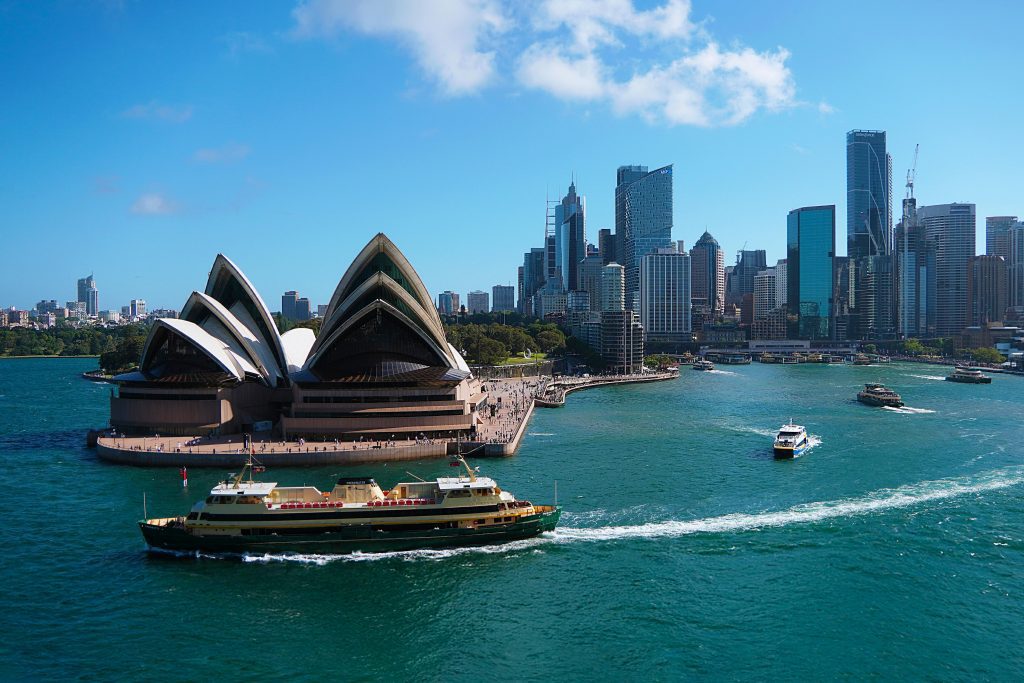
The Weather
If you’re planning on moving to Sydney—or Australia in general—there’s a good chance the weather is a major factor in your decision. Australia is often marketed as the land of endless summer, and Sydney, in particular, is famous for its sunshine, beaches, and outdoor lifestyle. And to be fair, the weather here is pretty great!
Sydney has hot summers (25–30°C) and mild winters (8–17°C), so you won’t be dealing with extreme cold. But don’t expect endless sunshine the weather can be pretty unpredictable here!
Don’t forget your Rain jacket!
Sydney may be known for its sunshine, but what many people don’t realise is that it actually gets more annual rainfall than London! I know what you’re thinking—how is that possible? But it’s true! Now, I’m not for one second suggesting that London has better weather than Sydney, but the numbers don’t lie.
Growing up in London, it was pretty normal for it to rain a lot. However, the difference is how it rains. In Sydney, when it rains, it pours. Statistically speaking, Sydney receives almost double the annual rainfall of London, but it actually has 30 to 40 fewer rainy days. The key difference? Sydney’s rain is much heavier and more intense, often arriving in dramatic downpours and thunderstorms. I’ve been caught in a few rainstorms in Sydney and can attest to its intensity!
The intensity of the Sun!
One thing you can’t underestimate is the sun. It feels far more intense here than in Europe, even at the same temperature. Being 100% honest, I’m not great at applying sunscreen, often forgetting it on holidays or in summer. However the sun here in Australia takes no prisoners! Thanks to Australia’s thinner ozone layer, UV levels are dangerously high, meaning you can burn within minutes, especially if you are as pale as me! This is definitely something that takes getting used to and is definitely a must when in Oz. Australia also has one of the highest skin cancer rates in the world, so sunscreen, hats, and sunglasses aren’t optional—they’re pretty much essential!
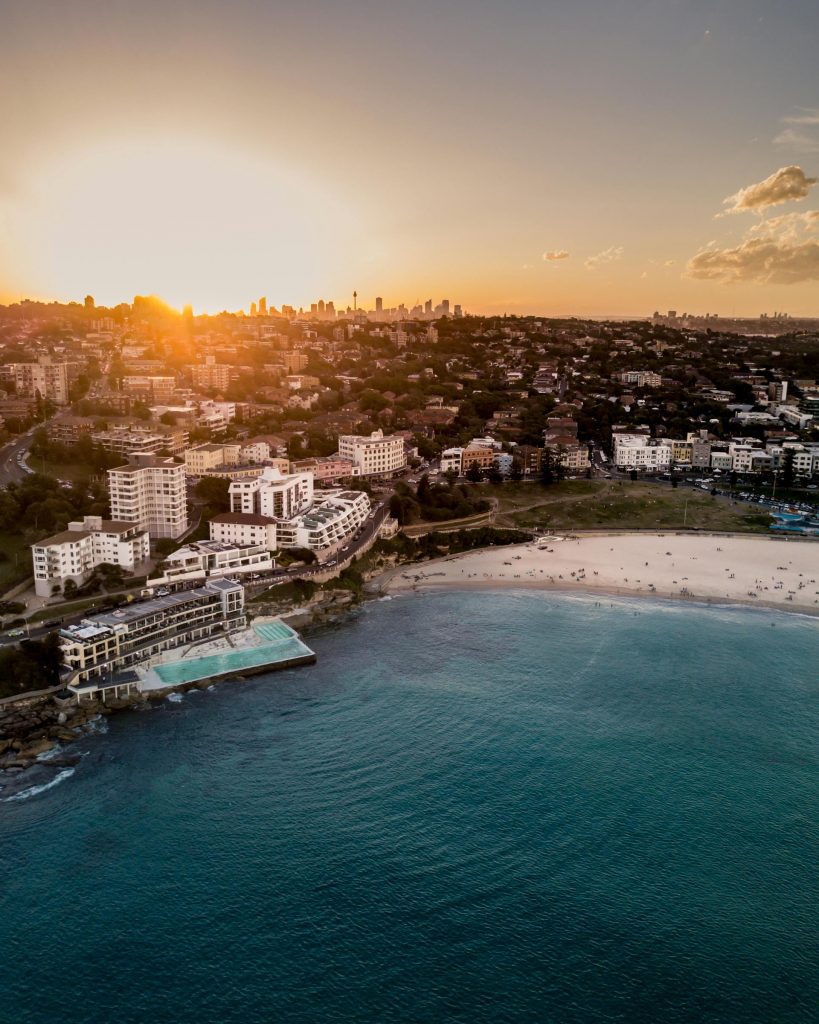
Summary
The weather in Sydney is great—warm, sunny, and perfect for outdoor activities. But remember to protect yourself from the sun, pack a rain coat and a jumper for the winter months. It can actually feel cold inside due to poorly insulated buildings. Everything is built for withstanding heat here, so those ‘Winter’ months can actually feel a lot colder than you might expect!
Public Transport
As discussed above, Sydney is a massive and wealthy city. Rent prices are insane, the job market is strong, and the city is visited by almost 3.5 million tourists per year. All this would suggest that Sydney would have a sizeable budget in order to build an efficient public transport system to accommodate the influx of tourists and residents. However, this really isn’t the case! Compared to European counterparts, such as London, Berlin or Vienna of pretty much any big European city, Sydney’s public transport is severely lacking. Trains are relatively slow and infrequent, and there is a clear maintained reliance on cars for commuters.
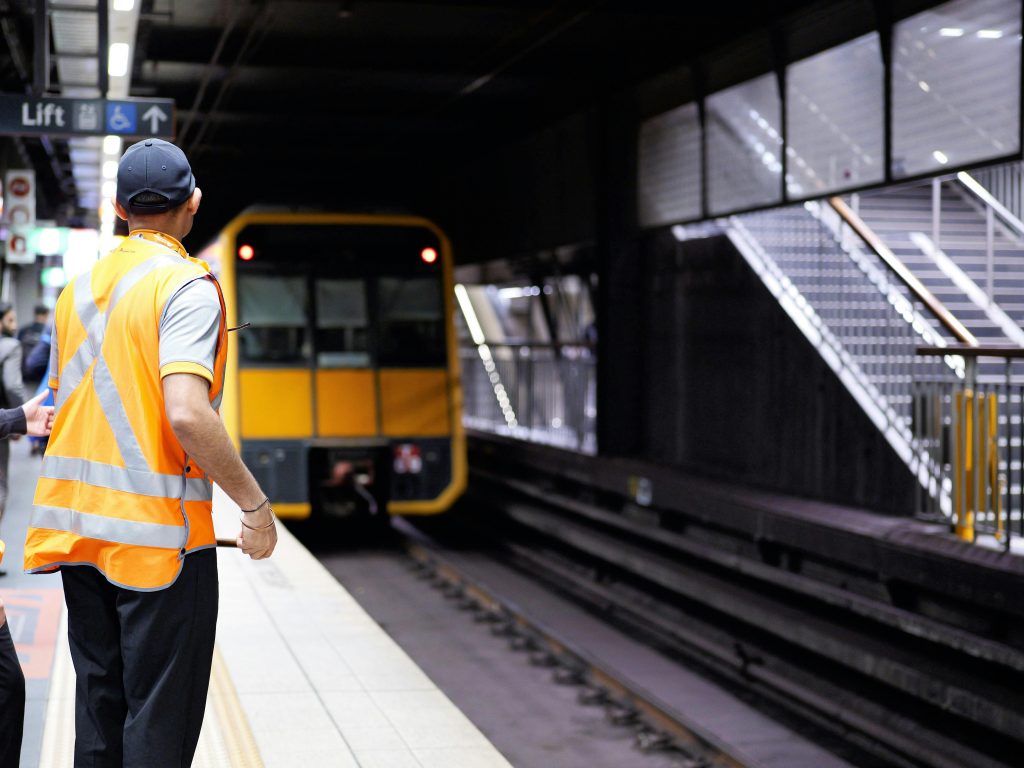
So Why is this the case?
Sydney’s public transport issues come down to Aussie car culture and some pretty poor urban planning. Unlike many cities around the world, Australian cities have a serious urban sprawl problem—places like Sydney just keep expanding outward, making the distance between residential areas and the CBD longer and longer.
“Urban sprawl refers to the uncontrolled expansion of urban areas into surrounding rural land, leading to low-density, car-dependent development. This phenomenon is characterized by single-use zoning, low-density residential housing, and increased reliance on individual transportation” (Terrascpope, 2024)
In many European cities urban sprawl is limited through the use of legislation and the focus on preserving green and open spaces. For example, many cities have what are know as “Green Belts“. These are designated areas where development is restricted to preserve open spaces and keep cities from constantly expanding. These policies don’t just protect nature; they also encourage higher-density housing in turn reducing distances between areas and making it far easier to build transport that can cope with the increasing size of cities population growth.
Unlike Europe, where strict zoning laws keep cities compact, Australia’s planning guidelines are much looser, allowing urban sprawl to continue unchecked. The result? Longer commutes, stretched-out infrastructure, and a public transport system that struggles to keep up up with the demand! All of which resulting in a city which continues to be car-centric despite the insane traffic and expensive toll roads!
Don’t worry it’s not that bad!
While Sydney’s public transport is far from perfect, improvements are happening—albeit slowly. One of the most significant upgrades is the Sydney Metro, a fast and efficient system. If you live and work near a Metro station, your commute has likely improved significantly. Unfortunately, there simply aren’t enough stations yet to make a city-wide impact.
That said, public transport in Sydney still comes with plenty of frustrations. The biggest issue? The system is designed so that you almost always have to go into the CBD to go out again. Instead of a well-connected network with cross-city routes, most train lines feed directly into the city center. This means that if you need to travel across Sydney, you’re often in for a long, roundabout trip.
And it’s not just an inconvenience—it’s a fact. Sydney officially has the longest average commute time in Australia, sitting at 71 minutes per day! Highlighting that the average Sydneysider is really just stuck in traffic or most likely waiting for or on a very slow train! Of course this isn’t the end of the world but just make sure to do your research before starting that new job or choosing an area to live in Sydney. You don’t want to end up like me, commuting for over 2 hours per day!
The Cost of Living
The cost of living in Sydney is pretty confusing to be honest. I know what you might be thinking—Australia, and Sydney in particular, is probably more expensive in every single metric, but you’d be wrong. I am not for one moment suggesting that the cost of living is cheaper in Sydney compared to European cities like Berlin or London, but rather I’m saying that the prices here will sometimes surprise you!
Wages and Taxes
Anyway, when considering the cost of living in Sydney, it’s essential to take a closer look at the wages here in Australia and compare them with places like the UK and Germany. For context, Australians earn an average of €62,000 per year, which is quite a jump compared to the €49,260 average in Germany and the €40,200 in the UK. This would suggest that if you are moving from Europe to Sydney, you’ll most likely earn slightly more than you did back home to offset the higher cost of living.
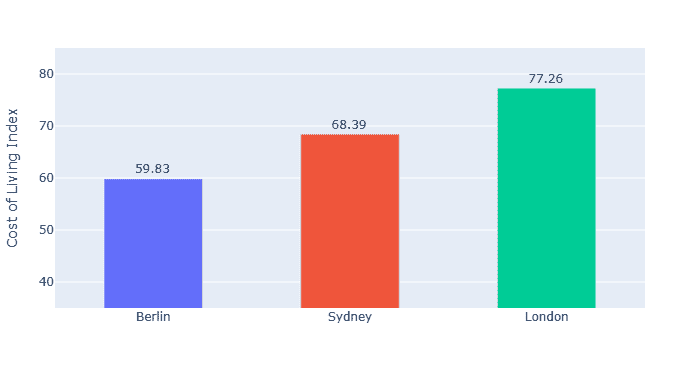
It’s also important to bear in mind that taxation is far lower in Australia compared to Germany, where higher social security contributions add to the tax burden. For example, on an average income of €82,000 in Australia, you’d pay less tax than you would in Germany, where a larger portion goes to taxes and social security. However, you might have to fork out extra cash for doctor’s visits in Australia, as healthcare is not free like in Germany or the UK, where it’s covered by public insurance.
Confusing Pricing
You’ll also find the pricing here to be somewhat confusing. Some expenses, like petrol, utilities, and dining out, are actually more affordable in Sydney. For instance, fuel prices are lower than in cities like London and Berlin, and utility bills for essentials like electricity and water tend to be more budget-friendly. Eating out can also be surprisingly reasonable, with mid-range and casual dining often costing less than in the UK or Germany.
However, on the flip side, cars, rent, and groceries are significantly pricier in Australia. Vehicle costs—whether purchasing new or used, or even leasing—are notably higher in Sydney. On top of that, car insurance and registration fees are steeper than what I was used to. And don’t even get me started on the rental market! Prices are sky-high, and competition is fierce. We’ve had to significantly downsize—moving from our own flat to a shared one for nearly the same price. Adding to the paradox, despite restaurant meals being cheaper, grocery prices in Australia are unexpectedly high, which feels completely counterintuitive.
These examples highlight how confusing the cost of living can be here in Sydney—while certain expenses like petrol and dining out may seem more affordable, the overall price of essentials like housing and groceries can quickly make Sydney one of the priciest places to live. It’s a bit of a balancing act, where some costs may feel like a bargain, but others can really take a bite out of your budget.
Summary
All in all, it’s hard to tell whether Sydney is more affordable or more expensive overall—it can depend on a variety of factors, including your lifestyle and personal spending habits. However, it’s safe to say that some essential costs, particularly rent, cars, and groceries, can make Sydney feel noticeably more expensive than what you might be used to in places like London or Berlin. If you’d like a deeper dive into the numbers, check out NUMBEO for a full breakdown on living costs!
The tax you pay and the money you earn can also vary quite a lot, especially depending on your visa status, as certain benefits or deductions may not apply to everyone. While some things may seem like a good deal, others will quickly add up, leaving you with a bigger dent in your budget. If you’re on a working holiday visa, the tax implications can be even more complicated, so be sure to check out our other article 3 Things you NEED to know before moving to Australia on a Working Holiday Visa! for a detailed breakdown of tax, superannuation and the other struggles that come along with the 417 Visa.
Conclusion
While Sydney is undeniably an exciting place to live with its stunning beaches, vibrant culture, and great job prospects, it comes with a few surprises that might catch you off guard. From the weather to the sometimes confusing costs of living, it’s important to know what you’re stepping into. But don’t let that put you off—Sydney has so much to offer if you’re prepared for the quirks.
Thanks again for this reading! We hope this article helps you make a more informed decision about whether moving from Europe to Sydney is the right choice for you.. And if you’re planning to move to Australia on a Working Holiday Visa, don’t forget to check out our other article for a deeper dive into the challenges that come with the 417 Visa!
Best of luck with your move, and enjoy your time in Sydney!
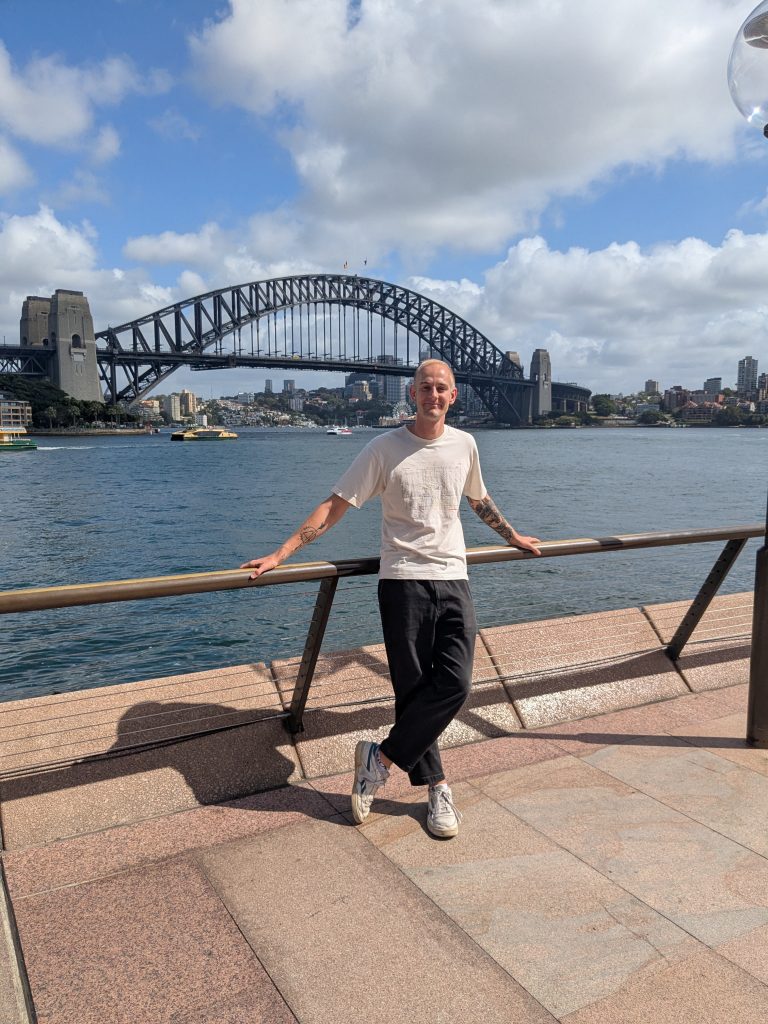
excellent article and extremely helpful
We’re glad you enjoyed our article! Let us know if there are any topics you’d love to hear about—we’re always open to new ideas!
Pingback: Blue Mountains Public Transport Guide: Getting Around by Train and Bus -